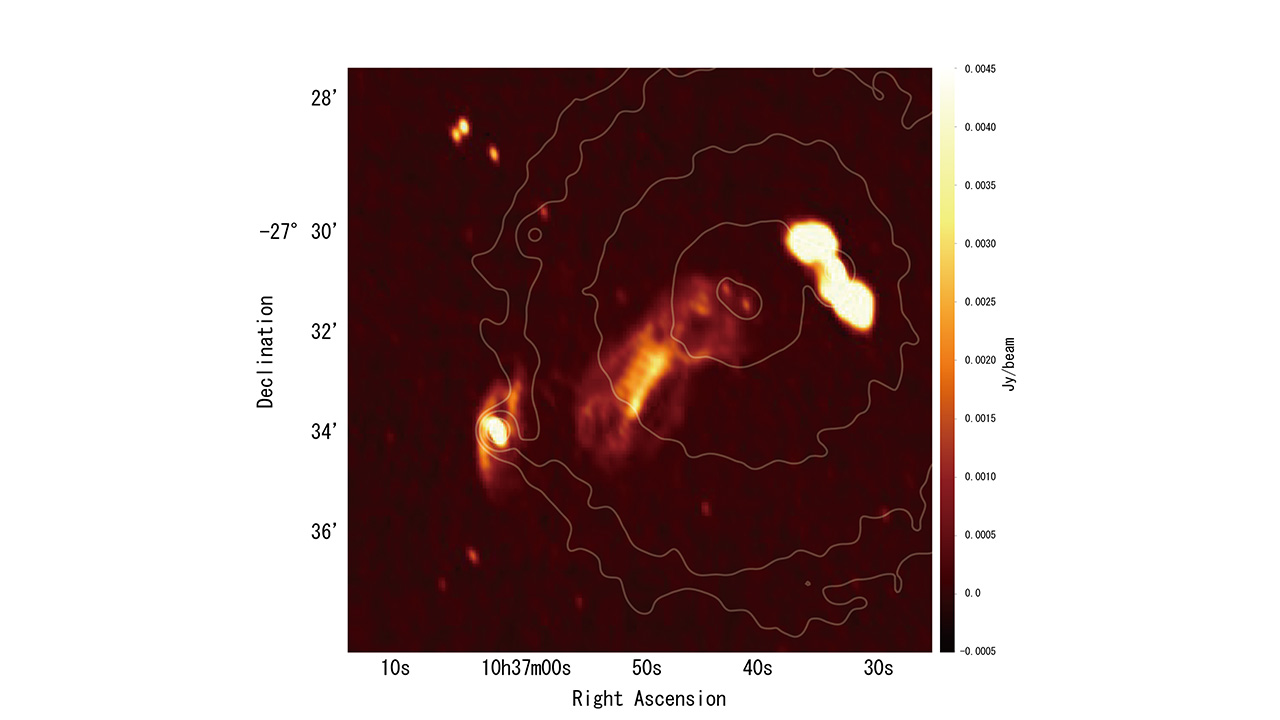
High sensitivity radio observations have discovered a cloud of magnetized plasma in the Hydra galaxy cluster. The odd location and shape of this plasma defy all conventional explanations. Dubbed the Flying Fox based on its silhouette, this plasma will remain a mystery until additional observations can provide more insight.
A team led by Kohei Kurahara at the National Astronomical Observatory of Japan analyzed observations from the Giant Metrewave Radio Telescope (GMRT) targeting the Hydra galaxy cluster, located over 100 million light years away in the direction of the constellation Hyrda. By applying recent analysis techniques to the GMRT (Giant Metrewave Radio Telescope) data archive, the team was able to discover a cloud of magnetized plasma shaped like a flying fox which has never been reported before.
Radio/optical/IR/X-ray images failed to find a host galaxy at the center of the Flying Fox. This combined with its elongated shape, has left astronomers scratching their heads; the Flying Fox does not fit the model for any known class of objects. New observing facilities, like the Square Kilometre Array currently under construction, are expected to study the Flying Fox and provide new insights into the nature and history of this unusual object.
Detailed Article(s)
Inexplicable Flying Fox found in Hydra Galaxy Cluster
NAOJ Mizusawa
Release Information
Researcher(s) Involved in this Release
- Kohei Kurahara (Mizusawa VLBI Observatory, National Astronomical Observatory of Japan)
- Takuya Akahori (Mizusawa VLBI Observatory, National Astronomical Observatory of Japan)
- Yuki Omiya (Department of Physics, Nagoya University)
- Kazuhiro Nakazawa (Department of Physics, Nagoya University / Kobayashi-Maskawa Institute for the Origin of Particles and the Universe)
Coordinated Release Organization(s)
- National Astronomical Observatory of Japan
- Kobayashi-Maskawa Institute for the Origin of Particles and the Universe, Nagoya University
Paper(s)
- Kohei Kurahara et al. "Discovery of Diffuse Radio Source in Abell 1060", in Publications of the Astronomical Society of Japan, DOI: 10.1093/pasj/psae011






